-
Happy Birthday ICMag! Been 20 years since Gypsy Nirvana created the forum! We are celebrating with a 4/20 Giveaway and by launching a new Patreon tier called "420club". You can read more here.
-
Important notice: ICMag's T.O.U. has been updated. Please review it here. For your convenience, it is also available in the main forum menu, under 'Quick Links"!
You are using an out of date browser. It may not display this or other websites correctly.
You should upgrade or use an alternative browser.
You should upgrade or use an alternative browser.
Fast Fungi / Myco Mother Culture Mix
- Thread starter Tactical Farmer
- Start date
Tactical Farmer
Member
In this thread you stated that teas we make should smell like good soil.I have a tea that I have been brewing for about 5 days.It consists of earth worm castings,earth juice bloom,and grandmas unsulphured molasses.It doesnt smell like good soil.It smells like sweet stinky cheese.it doesnt have any type of growth in it.I also dont have a air stone that I can use at this time,so I have the air hose from the air pump stuck in it and it is bubbling.Do you have to have the air stone? And,is my tea still good do you think? Since it doesnt smell as you mentioned that it should.Im thinking about adding some kelp meal and compost to it..Think that would be a good idea?
Would there be anything wrong with keeping a tea going constantly and just adding ingrediants to it as you need to? I mean as long as it is bubbling constantly?
Last question..I have read where you say that once the tea or fertalizer or whatever has gone annorobic (I know I spelled that wrong..lols) it is bad.I have read that in other places and I do comply with it.But then why do people use shit or shitty ,sewage,smelling things in thier outdoor veg gardens and so on with a good result ??
I have never had much luck keeping a tea going for very long - the stones get covered with (organic sludge) that slows down bubbles.
3 days is about all the longer mine go - if they smell like sewage ditch muck then they have turned (bad).
I bleach clean all items if that happens - (rarely does though).
I smell nutes regularly - my maxi-crop kelp turned (bad) recently & smelled like sewage ditch muck.
Nearly all my teas smell nice & earthy.
IMO - Just an airline without stones is probably not enough air.
Discovering where the best humic layers are is educational too. I've found that deciduous trees offer the best collection sites. Not too dry,but more moist areas seem to have a better mychorizal thing happening. The smell is a clue as well as how it looks. Of course I'm primarily after the BIM's. The michorizza is a prime indicator...can't hurt to get some of those fungi in the collection huh?yup thats the one, and yes finding the right spot to collect is key to success. the more diverse and healthy the better. plus its hella fun hiking through the forest looking for prime spots.
Tactical Farmer
Member
tactical farmer you would so like making beneficial indigenous micro organisms culture aka BIM. might want to do a google search on it.
I used to do that on nature hikes looking for shrooms, would collect unknown mushrooms - deer & bear crap - wild mycelia growing on stumps but would just add it to worm bin.
Found a new outdoor spot in some wetlands near an old pine forest with alot of activity.
Just got a nice rain - it should be booming out there tomorrow.
Ill take the camera - baggies & backpack to document the free natural supply run.
Got my first Lacto project going now thanks to you guys.
Thanks again for the data Micro Man.

quadracer
Active member
If you are looking for mycorrhizal species/mushroom fruits to introduce to your plants, keep an eye out for Scleroderma sp. (mainly Scleroderma cepa and Scleroderma citrinum), Laccaria bicolour, Laccaria laccata, Suillus granulatus, and Suillus punctipes.
A lot of these species are found in commercial mycorrhiza products. Personally I've found a lot of Scleroderma (it's basically the only thing fruiting right now) growing around many different types of plants.
At any rate, mushrooms in the compost pile is never a bad thing. I've been working on a project trying to introduce Ectomycorrhiza to their favorite trees in hopes of growing some delicious edible mushrooms. It's also much healthier for the tree.
A lot of these species are found in commercial mycorrhiza products. Personally I've found a lot of Scleroderma (it's basically the only thing fruiting right now) growing around many different types of plants.
At any rate, mushrooms in the compost pile is never a bad thing. I've been working on a project trying to introduce Ectomycorrhiza to their favorite trees in hopes of growing some delicious edible mushrooms. It's also much healthier for the tree.
yumAt any rate, mushrooms in the compost pile is never a bad thing. I've been working on a project trying to introduce Ectomycorrhiza to their favorite trees in hopes of growing some delicious edible mushrooms. It's also much healthier for the tree.
Tactical Farmer
Member
So a more accurate title & description here would be = Bacterial / Ecto Myco Mother Culture Mix ?
Lucky to make it back from the adventure - crashed my dirtbike twice navigating the fresh muck getting into the new swamp site then had a close encounter with a HUGE black bear.
It popped up out of the ferns, stood on its back legs & eyed me hard.
Bummed I missed the shot but glad I didn't get eaten.
Here is how close it was - no joke.
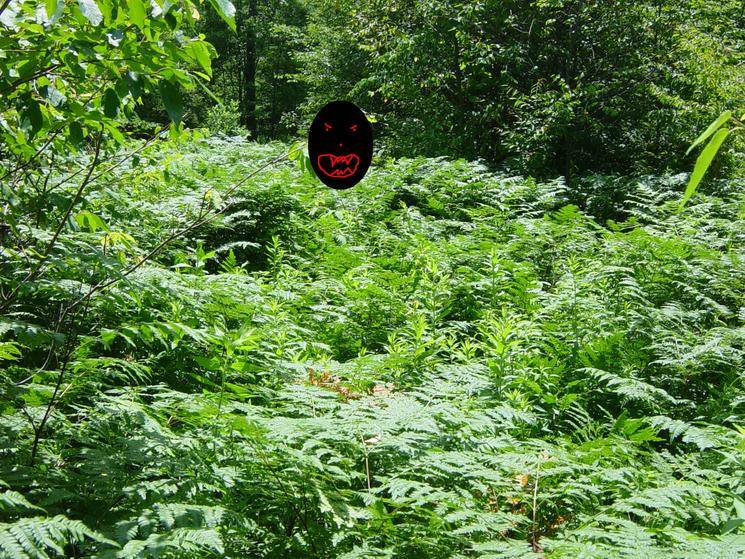
Lots of mushrooms & fungus out but the slugs & snails were all over them - picked about 15lbs for the worm bin.
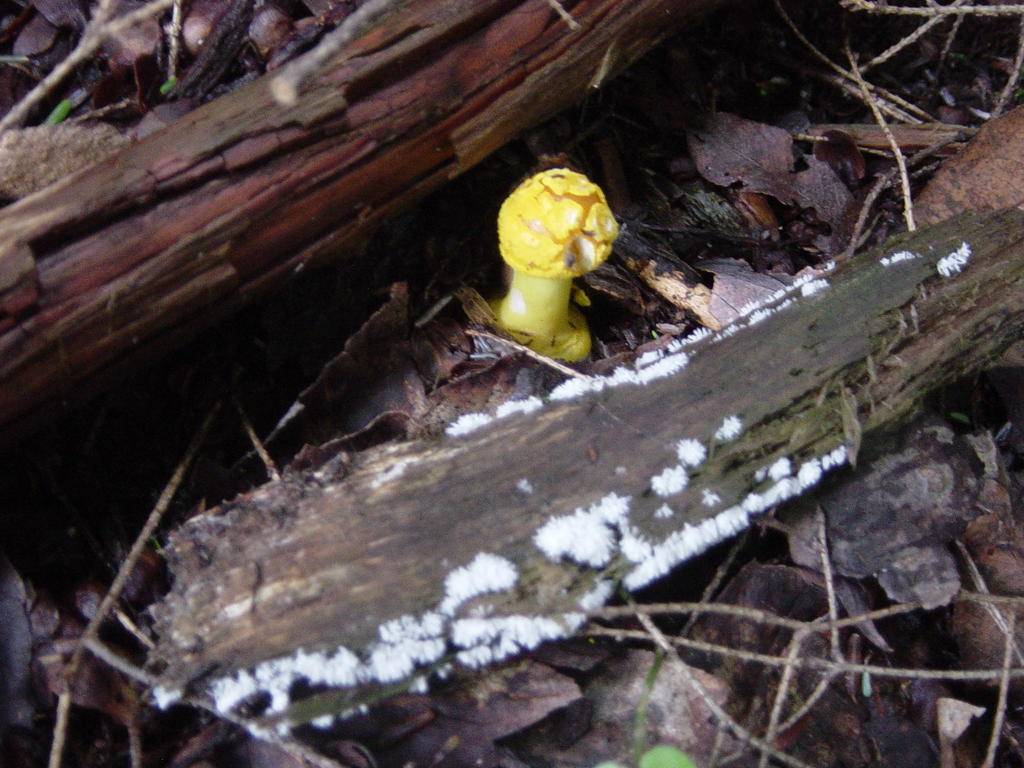
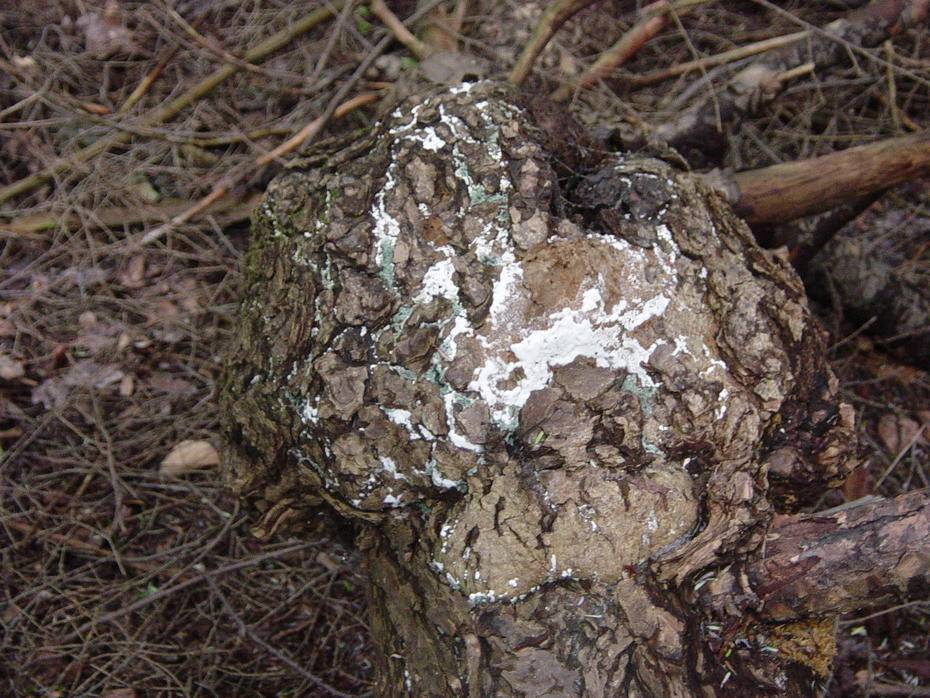
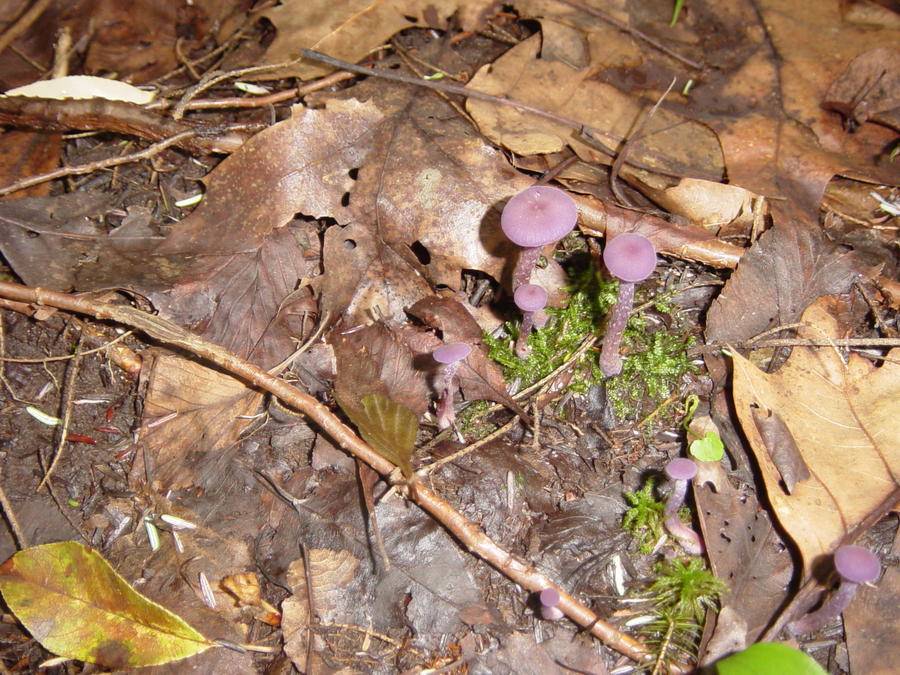
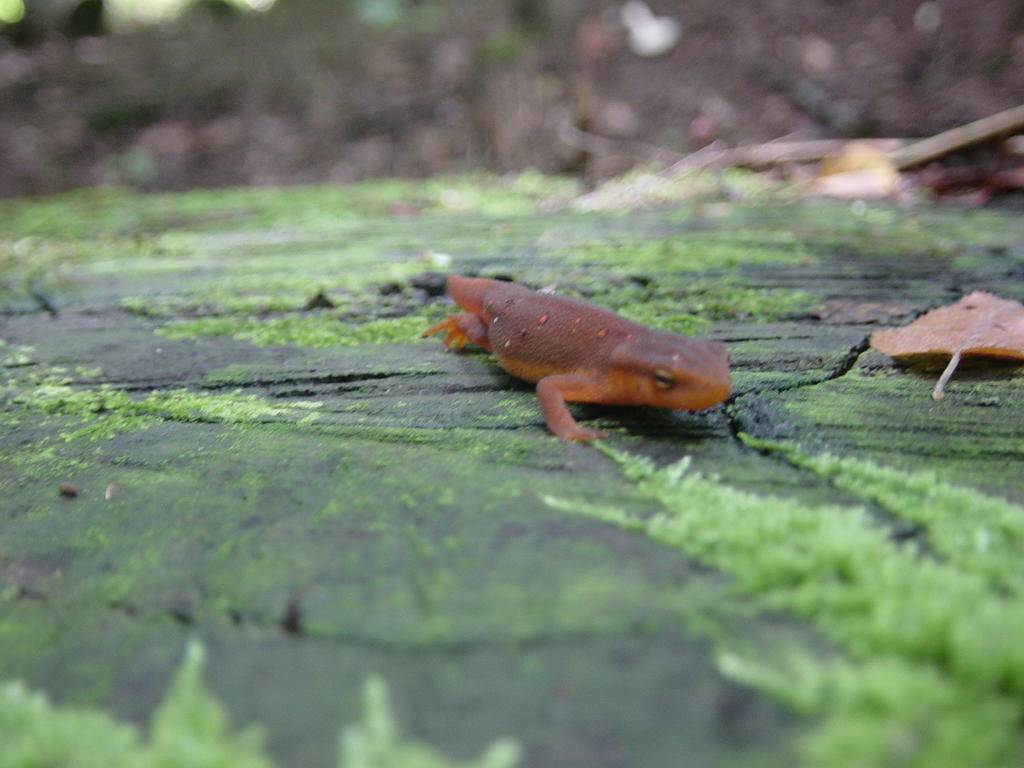
Found 2 nice spots for next summer - did some prep now.
1st.
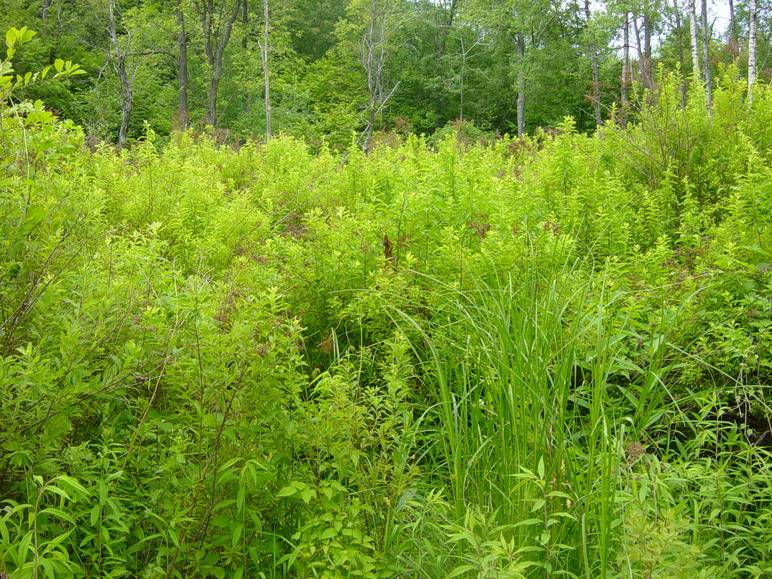
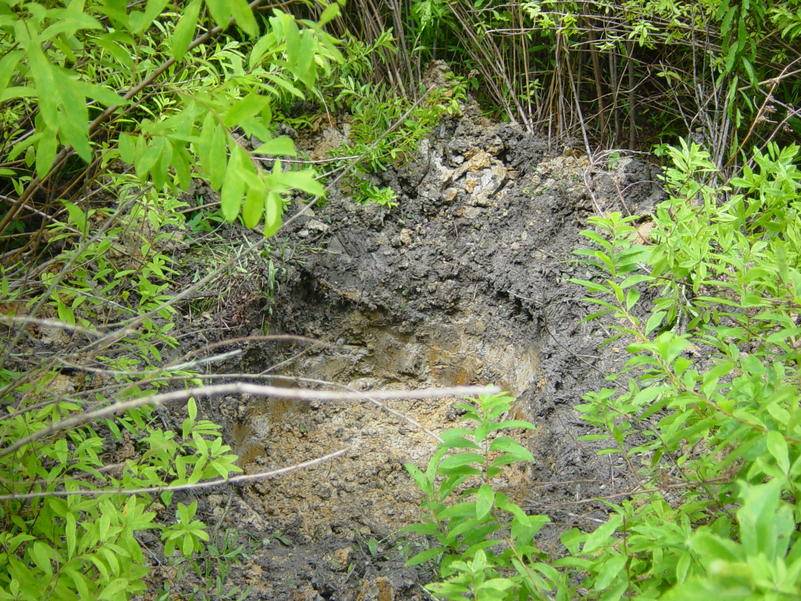
2nd.
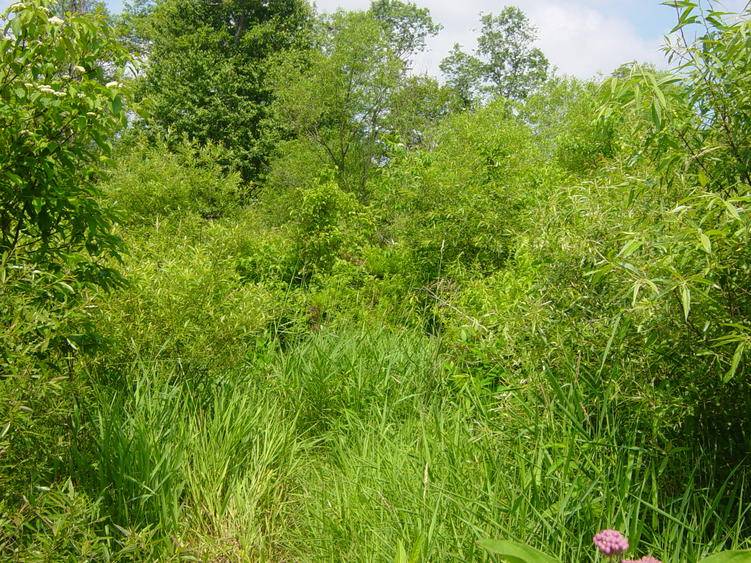
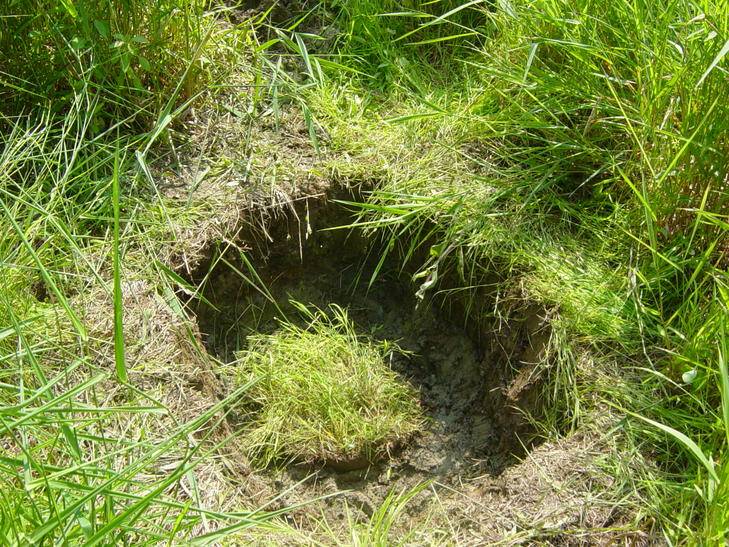
Blueberry's are out - yum - what a crazy fun day..
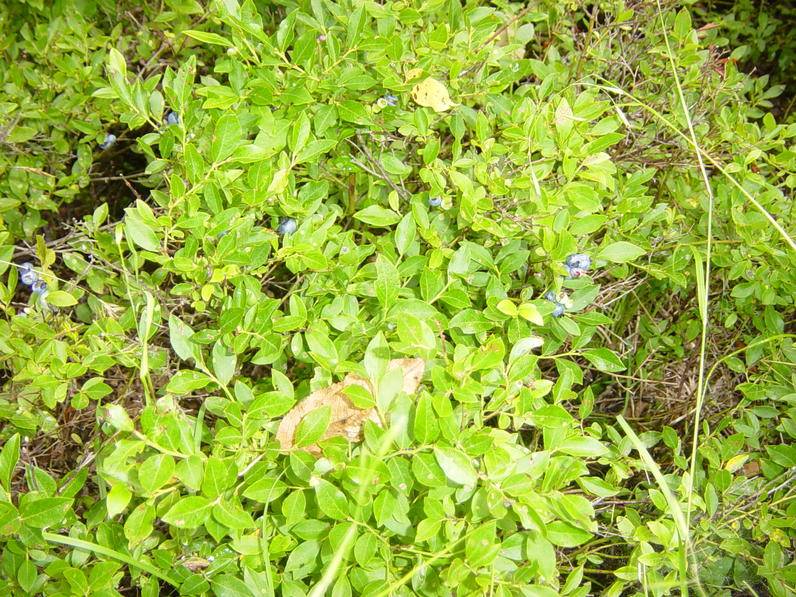
Lucky to make it back from the adventure - crashed my dirtbike twice navigating the fresh muck getting into the new swamp site then had a close encounter with a HUGE black bear.
It popped up out of the ferns, stood on its back legs & eyed me hard.
Bummed I missed the shot but glad I didn't get eaten.
Here is how close it was - no joke.
Lots of mushrooms & fungus out but the slugs & snails were all over them - picked about 15lbs for the worm bin.
Found 2 nice spots for next summer - did some prep now.
1st.
2nd.
Blueberry's are out - yum - what a crazy fun day..
quadracer
Active member
Nice photos. Those blueberry looks delicious! This mushroom looks like Laccaria amethystina, which is in the same Genus as Laccaria bicolor, one of the fungi that I mentioned earlier...
This part is interesting:
L. amethystina is a common species in most temperate zones of Europe, Asia, Central, South, and North America. It grows solitary to scattered with both deciduous and coniferous trees, and is mycorrhizal with these.[2] It appears in late summer to early winter, and often with beech;[1] in Central and South America, it more commonly grows in association with oak.[3] Research has shown that L. amethystina is a so-called "ammonia fungus", an ecological classification referring to those fungi that grow abundantly on soil after the addition of ammonia, or other nitrogen-containing material;[4] the congeneric species Laccaria bicolor is also an ammonia fungus.[3]
Seems it might be a great mushroom to use in conjunction with marijuana growing, they benefit each other and leave you with an edible species.... That is if this mushroom is actually Laccaria amethystina. There are some useful sites that have a lot of experts that can identify your mushrooms, mainly the Shroomery and Mushroom Observer.
Tactical Farmer
Member
I only located that one patch of the purple type - did pick most of them (never pick all).
If I see them again, will take some time to try to ID them better (spore print).
Im only confident to eat Oysters & Morels on sight.
Got a couple field guides with the psychedelics & deadly's highlighted.
Always like to check for blue bruising on possible trippers.
Shroomery is kinda kiddy - Mycotopia is where the old heads are at.
Get out of the house dudes, this shit is fun (just watch for bears & rattlesnakes).
Best to take a phone & gps just in case.
Thanks for the info Quadracer - Ill check that site.
If I see them again, will take some time to try to ID them better (spore print).
Im only confident to eat Oysters & Morels on sight.
Got a couple field guides with the psychedelics & deadly's highlighted.
Always like to check for blue bruising on possible trippers.
Shroomery is kinda kiddy - Mycotopia is where the old heads are at.
Get out of the house dudes, this shit is fun (just watch for bears & rattlesnakes).
Best to take a phone & gps just in case.
Thanks for the info Quadracer - Ill check that site.
Tactical Farmer
Member
Trichoderma
http://www.youtube.com/watch?v=JsQHWj2RfXg
From Wikipedia
Kingdom: Fungi
Division: Ascomycota
Subdivision ezizomycotina
ezizomycotina
Class: Sordariomycetes
Order: Hypocreales
Family: Hypocreaceae
Genus: Trichoderma
Diversity: about 35 species
Trichoderma is a genus of fungi that is present in all soils, where they are the most prevalent culturable fungi. Many species in this genus can be characterized as opportunistic avirulent plant symbionts.[1]
Cultures are typically fast growing at 25-30°C, but will not grow at 35°C. Colonies are transparent at first on media such as cornmeal dextrose agar (CMD) or white on richer media such as potato dextrose agar (PDA). Mycelium are not typically obvious on CMD, conidia typically form within one week in compact or loose tufts in shades of green or yellow or less frequently white. A yellow pigment may be secreted into the agar, especially on PDA. Some species produce a characteristic sweet or 'coconut' odor.
Biocontrol agent
Several strains of Trichoderma have been developed as biocontrol agents against fungal diseases of plants.[2] The various mechanisms include antibiosis, parasitism, inducing host-plant resistance, and competition. Most biocontrol agents are from the species T. harzianum, T. viride and T. hamatum. The biocontrol agent generally grows in its natural habitat on the root surface, and so affects root disease in particular, but can also be effective against foliar diseases.
Industrial use
Trichoderma, being a saprophyte adapted to thrive in diverse situations, produces a wide array of enzymes. By selecting strains that produce a particular kind of enzyme, and culturing these in suspension, industrial quantities of enzyme can be produced.
* T. reesei is used to produce cellulase and hemicellulase
http://www.youtube.com/watch?v=hPm7PZIPEZI
* T. longibratum is used to produce xylanase
Xylanase is the name given to a class of enzymes which degrade the linear polysaccharide beta-1,4-xylan into xylose[1], thus breaking down hemicellulose, one of the major components of plant cell walls.
As such, it plays a major role in micro-organisms thriving on plant sources (mammals, conversely, do not produce xylanase). Additionally, xylanases are present in fungi for the degradation of plant matter into usable nutrients.
Commercial applications for xylanase include the chlorine-free bleaching of wood pulp prior to the papermaking process, and the increased digestibility of silage (in this aspect, it is also used for fermentative composting). (Gulzar, Production and partial purification of Xylanase fromTrichoderma longibrachiatum. Published in international conference on biotechnology and neurosciences.
Additionally, it is the key ingredient in the dough conditioners s500 and us500 manufactured by Puratos [citation needed]. These enzymes are used to improve the dough's workability and absorption of water.
In the future, xylanase may be used for the production of biofuel from unusable plant material.
* T. harzianum is used to produce chitinase.[/B]
Chitinases are digestive enzymes that break down glycosidic bonds in chitin.[1] Because chitin composes the cell walls of fungi and exoskeletal elements of some animals (including worms and arthropods), chitinases are generally found in organisms that either need to reshape their own chitin[2] or to dissolve and digest the chitin of fungi or animals.
Chitin (C8H13O5N)n (pronounced /ˈkaɪtɨn/) is a long-chain polymer of a N-acetylglucosamine, a derivative of glucose, and is found in many places throughout the natural world. It is the main component of the cell walls of fungi, the exoskeletons of arthropods such as crustaceans (e.g. crabs, lobsters and shrimps) and insects, the radulas of mollusks and the beaks of cephalopods, including squid and octopuses. Chitin may be compared to the polysaccharide cellulose and to the protein keratin. Although keratin is a protein, and not a carbohydrate like chitin, keratin and chitin have similar structural functions. Chitin has also proven useful for several medical and industrial purposes.
_____________________________________________________________________________________________________________
http://www.youtube.com/watch?v=JsQHWj2RfXg
From Wikipedia
Kingdom: Fungi
Division: Ascomycota
Subdivision
Class: Sordariomycetes
Order: Hypocreales
Family: Hypocreaceae
Genus: Trichoderma
Diversity: about 35 species
Trichoderma is a genus of fungi that is present in all soils, where they are the most prevalent culturable fungi. Many species in this genus can be characterized as opportunistic avirulent plant symbionts.[1]
Cultures are typically fast growing at 25-30°C, but will not grow at 35°C. Colonies are transparent at first on media such as cornmeal dextrose agar (CMD) or white on richer media such as potato dextrose agar (PDA). Mycelium are not typically obvious on CMD, conidia typically form within one week in compact or loose tufts in shades of green or yellow or less frequently white. A yellow pigment may be secreted into the agar, especially on PDA. Some species produce a characteristic sweet or 'coconut' odor.
Biocontrol agent
Several strains of Trichoderma have been developed as biocontrol agents against fungal diseases of plants.[2] The various mechanisms include antibiosis, parasitism, inducing host-plant resistance, and competition. Most biocontrol agents are from the species T. harzianum, T. viride and T. hamatum. The biocontrol agent generally grows in its natural habitat on the root surface, and so affects root disease in particular, but can also be effective against foliar diseases.
Industrial use
Trichoderma, being a saprophyte adapted to thrive in diverse situations, produces a wide array of enzymes. By selecting strains that produce a particular kind of enzyme, and culturing these in suspension, industrial quantities of enzyme can be produced.
* T. reesei is used to produce cellulase and hemicellulase
http://www.youtube.com/watch?v=hPm7PZIPEZI
* T. longibratum is used to produce xylanase
Xylanase is the name given to a class of enzymes which degrade the linear polysaccharide beta-1,4-xylan into xylose[1], thus breaking down hemicellulose, one of the major components of plant cell walls.
As such, it plays a major role in micro-organisms thriving on plant sources (mammals, conversely, do not produce xylanase). Additionally, xylanases are present in fungi for the degradation of plant matter into usable nutrients.
Commercial applications for xylanase include the chlorine-free bleaching of wood pulp prior to the papermaking process, and the increased digestibility of silage (in this aspect, it is also used for fermentative composting). (Gulzar, Production and partial purification of Xylanase fromTrichoderma longibrachiatum. Published in international conference on biotechnology and neurosciences.
Additionally, it is the key ingredient in the dough conditioners s500 and us500 manufactured by Puratos [citation needed]. These enzymes are used to improve the dough's workability and absorption of water.
In the future, xylanase may be used for the production of biofuel from unusable plant material.
* T. harzianum is used to produce chitinase.[/B]
Chitinases are digestive enzymes that break down glycosidic bonds in chitin.[1] Because chitin composes the cell walls of fungi and exoskeletal elements of some animals (including worms and arthropods), chitinases are generally found in organisms that either need to reshape their own chitin[2] or to dissolve and digest the chitin of fungi or animals.
Chitin (C8H13O5N)n (pronounced /ˈkaɪtɨn/) is a long-chain polymer of a N-acetylglucosamine, a derivative of glucose, and is found in many places throughout the natural world. It is the main component of the cell walls of fungi, the exoskeletons of arthropods such as crustaceans (e.g. crabs, lobsters and shrimps) and insects, the radulas of mollusks and the beaks of cephalopods, including squid and octopuses. Chitin may be compared to the polysaccharide cellulose and to the protein keratin. Although keratin is a protein, and not a carbohydrate like chitin, keratin and chitin have similar structural functions. Chitin has also proven useful for several medical and industrial purposes.
_____________________________________________________________________________________________________________
TheBioMaster
Member
How do you know how long to brew the tea for? Do you wait for the foaming to stop? Do you scrape away the nasty looking foam stuff at the top?
Can you use stuff like:
Floracious Plus
Nitrozyme
Liquid Karma
Root Juice (BioBizz)
Grow (BioBizz) Small amount for food for bacteria?
Alga-Mic (BioBizz)
Tarantula & Pirahna
Great White (Plant Sucess)
Molasses
Mix all that up in 3 gallons of water in a 5 gallon bucket and bubble for about 3 days? On day 2 the foaming started....doesnt smell foul, smells kinda earthy and like some of the liquid stuff I added like the Karma....this sound about right?
How will I know its ready and about how should I go aboput mixing it down to acceptable plant levels like young to meduim to large size tomatoes?
I was also told that you can use Flora Nova Bloom 1 part liquid fert by GH as food for bacteria and fungi as well?
Thanks in advance!
Can you use stuff like:
Floracious Plus
Nitrozyme
Liquid Karma
Root Juice (BioBizz)
Grow (BioBizz) Small amount for food for bacteria?
Alga-Mic (BioBizz)
Tarantula & Pirahna
Great White (Plant Sucess)
Molasses
Mix all that up in 3 gallons of water in a 5 gallon bucket and bubble for about 3 days? On day 2 the foaming started....doesnt smell foul, smells kinda earthy and like some of the liquid stuff I added like the Karma....this sound about right?
How will I know its ready and about how should I go aboput mixing it down to acceptable plant levels like young to meduim to large size tomatoes?
I was also told that you can use Flora Nova Bloom 1 part liquid fert by GH as food for bacteria and fungi as well?
Thanks in advance!
Read the first part of the 'Tea Article' in the stickies.
TheBioMaster
Member
I did, it doesnt mention the products I am asking about it nor the time and expected results of the what the finish product should be like. Thanks anyways.
I did, it doesnt mention the products I am asking about it nor the time and expected results of the what the finish product should be like. Thanks anyways.
Hey brother,You don't need all that stuff.
In a 5 gallon bucket that's aerated adequately,brew for 24-36 hours the following:
1/4 cup of compost or EWC
1/4 cup of kelp meal
2 tablespoons molasses
That's it,don't worry about the foam. If it starts to smell like death it went too long. If it smells "good"....which is a matter of personal experience in the matter,use within that time frame.
I did, it doesnt mention the products I am asking about it nor the time and expected results of the what the finish product should be like. Thanks anyways.
Yes, I apologize. For some reason I thought it addressed the timing and foam issue more clearly.
Here are my recipes: http://www.microbeorganics.com/#Compost_Tea_Recipes
And reading this may help as well;
http://www.microbeorganics.com/#So_You_Wanna_Build_A_Compost_Tea_Brewer
Basically the foam tells you nothing and as Capt. has mentioned keeping your ingredients simple is what you want. In compost tea you are NOT striving for nutrients. Rather you are extracting and multiplying the beneficial microbes which create a nutrient cycling consortia which provide nytrients directly to the roots of your plants.
For further info on this go to; http://www.microbeorganics.com/#Organic_Growing_Microbial_Perspective
Tactical Farmer
Member
Thanks for the help guys - some more good info on this topic.
Mycorrhiza
From Wikipedia
A mycorrhiza (Gk.,: fungus roots[1], pl mycorrhizae, mycorrhizas) is a symbiotic (generally mutualistic, but occasionally weakly pathogenic) association between a fungus and the roots of a vascular plant.[2]
In a mycorrhizal association, the fungus colonizes the host plants' roots, either intracellularly as in arbuscular mycorrhizal fungi (AMF), or extracellularly as in ectomycorrhizal fungi. They are an important component of soil life and soil chemistry.
Contents
[hide]
* 1 Mutualist dynamics
o 1.1 Sugar-Water/Mineral exchange
o 1.2 Mechanisms
o 1.3 Disease resistance
o 1.4 Colonization of barren soil
o 1.5 Resistance to toxicity
* 2 Occurrence of mycorrhizal associations
* 3 Types of mycorrhiza
o 3.1 Endomycorrhiza
o 3.2 Ectomycorrhiza
o 3.3 Ericoid mycorrhiza
* 4 See also
* 5 References
* 6 External links
Mutualist dynamics
Mycorrhizae form a mutualistic relationship with the roots of most plant species (and while only a small proportion of all species has been examined, 95% of these plant families are predominantly mycorrhizal).[3]
[edit] Sugar-Water/Mineral exchange
This mutualistic association provides the fungus with relatively constant and direct access to carbohydrates, such as glucose and sucrose supplied by the plant.[4] The carbohydrates are translocated from their source (usually leaves) to root tissue and on to fungal partners. In return, the plant gains the benefits of the mycelium's higher absorbtive capacity for water and mineral nutrients (due to comparatively large surface area of mycelium:root ratio), thus improving the plant's mineral absorption capabilities.[5]
Plant roots alone may be incapable of taking up phosphate ions that are demineralized, for example, in soils with a basic pH. The mycelium of the mycorrhizal fungus can, however, access these phosphorus sources, and make them available to the plants they colonize.[6]
Mechanisms
The mechanisms of increased absorption are both physical and chemical. Mycorrhizal mycelia are much smaller in diameter than the smallest root, and thus can explore a greater volume of soil, providing a larger surface area for absorption. Also, the cell membrane chemistry of fungi is different from that of plants (including organic acid excretion which aids in ion displacement[7]). Mycorrhizae are especially beneficial for the plant partner in nutrient-poor soils[8].
[edit] Disease resistance
Mycorrhizal plants are often more resistant to diseases, such as those caused by microbial soil-borne pathogens[9][10], and are also more resistant to the effects of drought[11][12][13]. These effects are perhaps due to the improved water and mineral uptake in mycorrhizal plants.
[edit] Colonization of barren soil
Plants grown in sterile soils and growth media often perform poorly without the addition of spores or hyphae of mycorrhizal fungi to colonise the plant roots and aid in the uptake of soil mineral nutrients.[14] The absence of mycorrhizal fungi can also slow plant growth in early succession or on degraded landscapes.[15] The introduction of alien mycorrhizal plants to nutrient-deficient ecosystems puts indigenous non-mycorrhizal plants at a competitive disadvantage.[16]
[edit] Resistance to toxicity
Fungi have been found to have a protective role for plants rooted in soils with high metal concentrations, such as acidic and contaminated soils. Pine trees inoculated with Pisolithus tinctorius planted in several contaminated sites displayed high tolerance to the prevailing contaminant, survivorship and growth. One study discovered the existence of Suillus luteus strains with varying tolerance of zinc. Another study discovered that zinc-tolerant strains of Suillus bovinus conferred resistance to plants of Pinus sylvestris. This was probably due to binding of the metal to the extramatricial mycelium of the fungus, without affecting the exchange of beneficial substances.[16]
Occurrence of mycorrhizal associations
At around 400 million years old, the Rhynie chert contains the earliest fossil assemblage yielding plants preserved in sufficient detail to detect mycorrhizae - and they are indeed observed in the stems of Aglaophyton major.[17]
Mycorrhizae are present in 92% of plant families studied (80% of species),[18] with arbuscular mycorrhizae being the ancestral and predominant form,[18] and indeed the most prevalent symbiotic association found in the plant kingdom.[4] The structure of arbuscular mycorrhizae has been highly conserved since their first appearance in the fossil record,[17] with both the development of ectomycorrhizae, and the loss of mycorrhizae, evolving convergently on multiple occasions.[18]
[edit] Types of mycorrhiza
Arbuscular mycorrhizal wheat
Mycorrhizas are commonly divided into ectomycorrhizas and endomycorrhizas. The two groups are differentiated by the fact that the hyphae of ectomycorrhizal fungi do not penetrate individual cells within the root, while the hyphae of endomycorrhizal fungi penetrate the cell wall and invaginate the cell membrane. A third group known as Ericoid mycorrhizae is also ecologically significant.[19]
Endomycorrhiza Arbuscular mycorrhizal fungi
Endomycorrhiza are variable and have been further classified as arbuscular, ericoid, arbutoid, monotropoid, and orchid mycorrhizae [20]. Arbuscular mycorrhizas, or AM (formerly known as vesicular-arbuscular mycorrhizas, or VAM), are mycorrhizas whose hyphae enter into the plant cells, producing structures that are either balloon-like (vesicles) or dichotomously-branching invaginations (arbuscules). The fungal hyphae do not in fact penetrate the protoplast (i.e. the interior of the cell), but invaginate the cell membrane. The structure of the arbuscules greatly increases the contact surface area between the hypha and the cell cytoplasm to facilitate the transfer of nutrients between them.
Arbuscular mycorrhizae are formed only by fungi in the division Glomeromycota. Fossil evidence[17] and DNA sequence analysis[21] suggest that this mutualism appeared 400-460 million years ago, when the first plants were colonizing land. Arbuscular mycorrhizas are found in 85% of all plant families, and occur in many crop species.[18] The hyphae of arbuscular mycorrhizal fungi produce the glycoprotein glomalin, which may be one of the major stores of carbon in the soil. Arbuscular mycorrhizal fungi have (possibly) been asexual for many millions of years and, unusually, individuals can contain many genetically different nuclei (a phenomenon called heterokaryosis).[22]
Many plants in the order Ericales form ericoid mycorrhizas, while some members of the Ericales form arbutoid and monotropoid mycorrhizas. All orchids are mycoheterotrophic at some stage during their lifecycle and form orchid mycorrhiza with a range of basidiomycete fungi.
Ectomycorrhiza Ectomycorrhizal beech
Ectomycorrhizas, or EcM, are typically formed between the roots of around 10% of plant families, mostly woody plants including the birch, dipterocarp, eucalyptus, oak, pine, and rose[18] families and fungi belonging to the Basidiomycota, Ascomycota, and Zygomycota. Ectomycorrhizas consist of a hyphal sheath, or mantle, covering the root tip and a hartig net of hyphae surrounding the plant cells within the root cortex. In some cases the hyphae may also penetrate the plant cells, in which case the mycorrhiza is called an ectendomycorrhiza. Outside the root, the fungal mycelium forms an extensive network within the soil and leaf litter. Nutrients can be shown to move between different plants through the fungal network (sometimes called the wood wide web). Carbon has been shown to move from paper birch trees into Douglas-fir trees thereby promoting succession in ecosystems.[23]
The ectomycorrhizal fungus Laccaria bicolor has been found to lure and kill springtails to obtain nitrogen, some of which may then be transferred to the mycorrhizal host plant. In a study by Klironomos and Hart, Eastern White Pine inoculated with L. bicolor was able to derive up to 25% of its nitrogen from springtails.[24][25]
The first genomic sequence for a representative of symbiotic fungi, the ectomycorrhizal basidiomycete Laccaria bicolor, has been published[26]. An expansion of several multigene families occurred in this fungus, suggesting that adaptation to symbiosis proceeded by gene duplication. Within lineage-specific genes those coding for symbiosis-regulated secreted proteins showed an up-regulated expression in ectomycorrhizal root tips suggesting a role in the partner communication. Laccaria bicolor is lacking enzymes involved in the degradation of plant cell wall components (cellulose, hemicellulose, pectins and pectates), preventing the symbiont from degrading host cells during the root colonisation. By contrast, Laccaria bicolor possesses expanded multigene families associated with hydrolysis of bacterial and microfauna polysaccharides and proteins. This genome analysis revealed the dual saprotrophic and biotrophic lifestyle of the mycorrhizal fungus that enables it to grow within both soil and living plant roots.
[edit] Ericoid mycorrhiza
An ericoid mycorrhizal fungus isolated from Woollsia pungens[27]
Ericoid mycorrhizas are the third of the three more ecologically important types, They have a simple intraradical (grow in cells) phase, consisting of dense coils of hyphae in the outermost layer of root cells. There is no periradical phase and the extraradical phase consists of sparse hyphae that don't extend very far into the surrounding soil. They might form sporocarps (probably in the form of small cups), but their reproductive biology is little understood.[19]
Ericoid mycorrhizae have also been shown to have considerable saprotrophic capabilities, which would enable plants to receive nutrients from not-yet-decomposed materials via the decomposing actions of their ericoid partners.[28]
Mycorrhiza
From Wikipedia
A mycorrhiza (Gk.,: fungus roots[1], pl mycorrhizae, mycorrhizas) is a symbiotic (generally mutualistic, but occasionally weakly pathogenic) association between a fungus and the roots of a vascular plant.[2]
In a mycorrhizal association, the fungus colonizes the host plants' roots, either intracellularly as in arbuscular mycorrhizal fungi (AMF), or extracellularly as in ectomycorrhizal fungi. They are an important component of soil life and soil chemistry.
Contents
[hide]
* 1 Mutualist dynamics
o 1.1 Sugar-Water/Mineral exchange
o 1.2 Mechanisms
o 1.3 Disease resistance
o 1.4 Colonization of barren soil
o 1.5 Resistance to toxicity
* 2 Occurrence of mycorrhizal associations
* 3 Types of mycorrhiza
o 3.1 Endomycorrhiza
o 3.2 Ectomycorrhiza
o 3.3 Ericoid mycorrhiza
* 4 See also
* 5 References
* 6 External links
Mutualist dynamics
Mycorrhizae form a mutualistic relationship with the roots of most plant species (and while only a small proportion of all species has been examined, 95% of these plant families are predominantly mycorrhizal).[3]
[edit] Sugar-Water/Mineral exchange
This mutualistic association provides the fungus with relatively constant and direct access to carbohydrates, such as glucose and sucrose supplied by the plant.[4] The carbohydrates are translocated from their source (usually leaves) to root tissue and on to fungal partners. In return, the plant gains the benefits of the mycelium's higher absorbtive capacity for water and mineral nutrients (due to comparatively large surface area of mycelium:root ratio), thus improving the plant's mineral absorption capabilities.[5]
Plant roots alone may be incapable of taking up phosphate ions that are demineralized, for example, in soils with a basic pH. The mycelium of the mycorrhizal fungus can, however, access these phosphorus sources, and make them available to the plants they colonize.[6]
Mechanisms
The mechanisms of increased absorption are both physical and chemical. Mycorrhizal mycelia are much smaller in diameter than the smallest root, and thus can explore a greater volume of soil, providing a larger surface area for absorption. Also, the cell membrane chemistry of fungi is different from that of plants (including organic acid excretion which aids in ion displacement[7]). Mycorrhizae are especially beneficial for the plant partner in nutrient-poor soils[8].
[edit] Disease resistance
Mycorrhizal plants are often more resistant to diseases, such as those caused by microbial soil-borne pathogens[9][10], and are also more resistant to the effects of drought[11][12][13]. These effects are perhaps due to the improved water and mineral uptake in mycorrhizal plants.
[edit] Colonization of barren soil
Plants grown in sterile soils and growth media often perform poorly without the addition of spores or hyphae of mycorrhizal fungi to colonise the plant roots and aid in the uptake of soil mineral nutrients.[14] The absence of mycorrhizal fungi can also slow plant growth in early succession or on degraded landscapes.[15] The introduction of alien mycorrhizal plants to nutrient-deficient ecosystems puts indigenous non-mycorrhizal plants at a competitive disadvantage.[16]
[edit] Resistance to toxicity
Fungi have been found to have a protective role for plants rooted in soils with high metal concentrations, such as acidic and contaminated soils. Pine trees inoculated with Pisolithus tinctorius planted in several contaminated sites displayed high tolerance to the prevailing contaminant, survivorship and growth. One study discovered the existence of Suillus luteus strains with varying tolerance of zinc. Another study discovered that zinc-tolerant strains of Suillus bovinus conferred resistance to plants of Pinus sylvestris. This was probably due to binding of the metal to the extramatricial mycelium of the fungus, without affecting the exchange of beneficial substances.[16]
Occurrence of mycorrhizal associations
At around 400 million years old, the Rhynie chert contains the earliest fossil assemblage yielding plants preserved in sufficient detail to detect mycorrhizae - and they are indeed observed in the stems of Aglaophyton major.[17]
Mycorrhizae are present in 92% of plant families studied (80% of species),[18] with arbuscular mycorrhizae being the ancestral and predominant form,[18] and indeed the most prevalent symbiotic association found in the plant kingdom.[4] The structure of arbuscular mycorrhizae has been highly conserved since their first appearance in the fossil record,[17] with both the development of ectomycorrhizae, and the loss of mycorrhizae, evolving convergently on multiple occasions.[18]
[edit] Types of mycorrhiza
Arbuscular mycorrhizal wheat
Mycorrhizas are commonly divided into ectomycorrhizas and endomycorrhizas. The two groups are differentiated by the fact that the hyphae of ectomycorrhizal fungi do not penetrate individual cells within the root, while the hyphae of endomycorrhizal fungi penetrate the cell wall and invaginate the cell membrane. A third group known as Ericoid mycorrhizae is also ecologically significant.[19]
Endomycorrhiza Arbuscular mycorrhizal fungi
Endomycorrhiza are variable and have been further classified as arbuscular, ericoid, arbutoid, monotropoid, and orchid mycorrhizae [20]. Arbuscular mycorrhizas, or AM (formerly known as vesicular-arbuscular mycorrhizas, or VAM), are mycorrhizas whose hyphae enter into the plant cells, producing structures that are either balloon-like (vesicles) or dichotomously-branching invaginations (arbuscules). The fungal hyphae do not in fact penetrate the protoplast (i.e. the interior of the cell), but invaginate the cell membrane. The structure of the arbuscules greatly increases the contact surface area between the hypha and the cell cytoplasm to facilitate the transfer of nutrients between them.
Arbuscular mycorrhizae are formed only by fungi in the division Glomeromycota. Fossil evidence[17] and DNA sequence analysis[21] suggest that this mutualism appeared 400-460 million years ago, when the first plants were colonizing land. Arbuscular mycorrhizas are found in 85% of all plant families, and occur in many crop species.[18] The hyphae of arbuscular mycorrhizal fungi produce the glycoprotein glomalin, which may be one of the major stores of carbon in the soil. Arbuscular mycorrhizal fungi have (possibly) been asexual for many millions of years and, unusually, individuals can contain many genetically different nuclei (a phenomenon called heterokaryosis).[22]
Many plants in the order Ericales form ericoid mycorrhizas, while some members of the Ericales form arbutoid and monotropoid mycorrhizas. All orchids are mycoheterotrophic at some stage during their lifecycle and form orchid mycorrhiza with a range of basidiomycete fungi.
Ectomycorrhiza Ectomycorrhizal beech
Ectomycorrhizas, or EcM, are typically formed between the roots of around 10% of plant families, mostly woody plants including the birch, dipterocarp, eucalyptus, oak, pine, and rose[18] families and fungi belonging to the Basidiomycota, Ascomycota, and Zygomycota. Ectomycorrhizas consist of a hyphal sheath, or mantle, covering the root tip and a hartig net of hyphae surrounding the plant cells within the root cortex. In some cases the hyphae may also penetrate the plant cells, in which case the mycorrhiza is called an ectendomycorrhiza. Outside the root, the fungal mycelium forms an extensive network within the soil and leaf litter. Nutrients can be shown to move between different plants through the fungal network (sometimes called the wood wide web). Carbon has been shown to move from paper birch trees into Douglas-fir trees thereby promoting succession in ecosystems.[23]
The ectomycorrhizal fungus Laccaria bicolor has been found to lure and kill springtails to obtain nitrogen, some of which may then be transferred to the mycorrhizal host plant. In a study by Klironomos and Hart, Eastern White Pine inoculated with L. bicolor was able to derive up to 25% of its nitrogen from springtails.[24][25]
The first genomic sequence for a representative of symbiotic fungi, the ectomycorrhizal basidiomycete Laccaria bicolor, has been published[26]. An expansion of several multigene families occurred in this fungus, suggesting that adaptation to symbiosis proceeded by gene duplication. Within lineage-specific genes those coding for symbiosis-regulated secreted proteins showed an up-regulated expression in ectomycorrhizal root tips suggesting a role in the partner communication. Laccaria bicolor is lacking enzymes involved in the degradation of plant cell wall components (cellulose, hemicellulose, pectins and pectates), preventing the symbiont from degrading host cells during the root colonisation. By contrast, Laccaria bicolor possesses expanded multigene families associated with hydrolysis of bacterial and microfauna polysaccharides and proteins. This genome analysis revealed the dual saprotrophic and biotrophic lifestyle of the mycorrhizal fungus that enables it to grow within both soil and living plant roots.
[edit] Ericoid mycorrhiza
An ericoid mycorrhizal fungus isolated from Woollsia pungens[27]
Ericoid mycorrhizas are the third of the three more ecologically important types, They have a simple intraradical (grow in cells) phase, consisting of dense coils of hyphae in the outermost layer of root cells. There is no periradical phase and the extraradical phase consists of sparse hyphae that don't extend very far into the surrounding soil. They might form sporocarps (probably in the form of small cups), but their reproductive biology is little understood.[19]
Ericoid mycorrhizae have also been shown to have considerable saprotrophic capabilities, which would enable plants to receive nutrients from not-yet-decomposed materials via the decomposing actions of their ericoid partners.[28]
Tactical Farmer
Member
Quadracer - Check out the data above in red on the bicolor, pretty neat.
3 days ago I took the bacterial & fungal culture material & brewed separate teas.
Today I mixed them together & fed the veggie garden the tea then diluted the tea & foliar sprayed the plants to coat them with the active benificial microbs.
Hoping this will prevent the tomato blight rot fungus from killin' my maters this year.
3 days ago I took the bacterial & fungal culture material & brewed separate teas.
Today I mixed them together & fed the veggie garden the tea then diluted the tea & foliar sprayed the plants to coat them with the active benificial microbs.
Hoping this will prevent the tomato blight rot fungus from killin' my maters this year.
TheBioMaster
Member
Hey brother,You don't need all that stuff.
In a 5 gallon bucket that's aerated adequately,brew for 24-36 hours the following:
1/4 cup of compost or EWC
1/4 cup of kelp meal
2 tablespoons molasses
That's it,don't worry about the foam. If it starts to smell like death it went too long. If it smells "good"....which is a matter of personal experience in the matter,use within that time frame.
I realize that Capt. I have been making teas for a while now just not using the products I mentioned and are in question about.
You can make tea just running regular old air through some rice wash and get bacteria cultures started this way without using ANYTHING on your list.
My point or rather questions again was with specific products that I have purchased in the past and dont use or want anymore. I am trying to get rid of this stuff without wasting it basically.
I understand completly what it takes to make basic tea cultures of bacteria. Just not what I was asking about.
PS- You cant NOT worry about the foam especially if your making more than a gallon of concentrate. You should really read the posted articles by microbman. Lots of real science and data there.
TheBioMaster
Member
No apology needed sir! You have posted a plethora of information on teas and I thank you for your time and information. Great stuff!! Great read recomended to all also, I especially like the first link you posted.
 Thanks again!!
Thanks again!!
 Thanks again!!
Thanks again!!
Yes, I apologize. For some reason I thought it addressed the timing and foam issue more clearly.
Here are my recipes: http://www.microbeorganics.com/#Compost_Tea_Recipes
And reading this may help as well;
http://www.microbeorganics.com/#So_You_Wanna_Build_A_Compost_Tea_Brewer
Basically the foam tells you nothing and as Capt. has mentioned keeping your ingredients simple is what you want. In compost tea you are NOT striving for nutrients. Rather you are extracting and multiplying the beneficial microbes which create a nutrient cycling consortia which provide nytrients directly to the roots of your plants.
For further info on this go to; http://www.microbeorganics.com/#Organic_Growing_Microbial_Perspective
Latest posts
-
-
-
How You Can Develop Cannabis To Do What You Want
- Latest: farmerfischer
-
-
Latest posts
-
-
-
How You Can Develop Cannabis To Do What You Want
- Latest: farmerfischer
-
-

